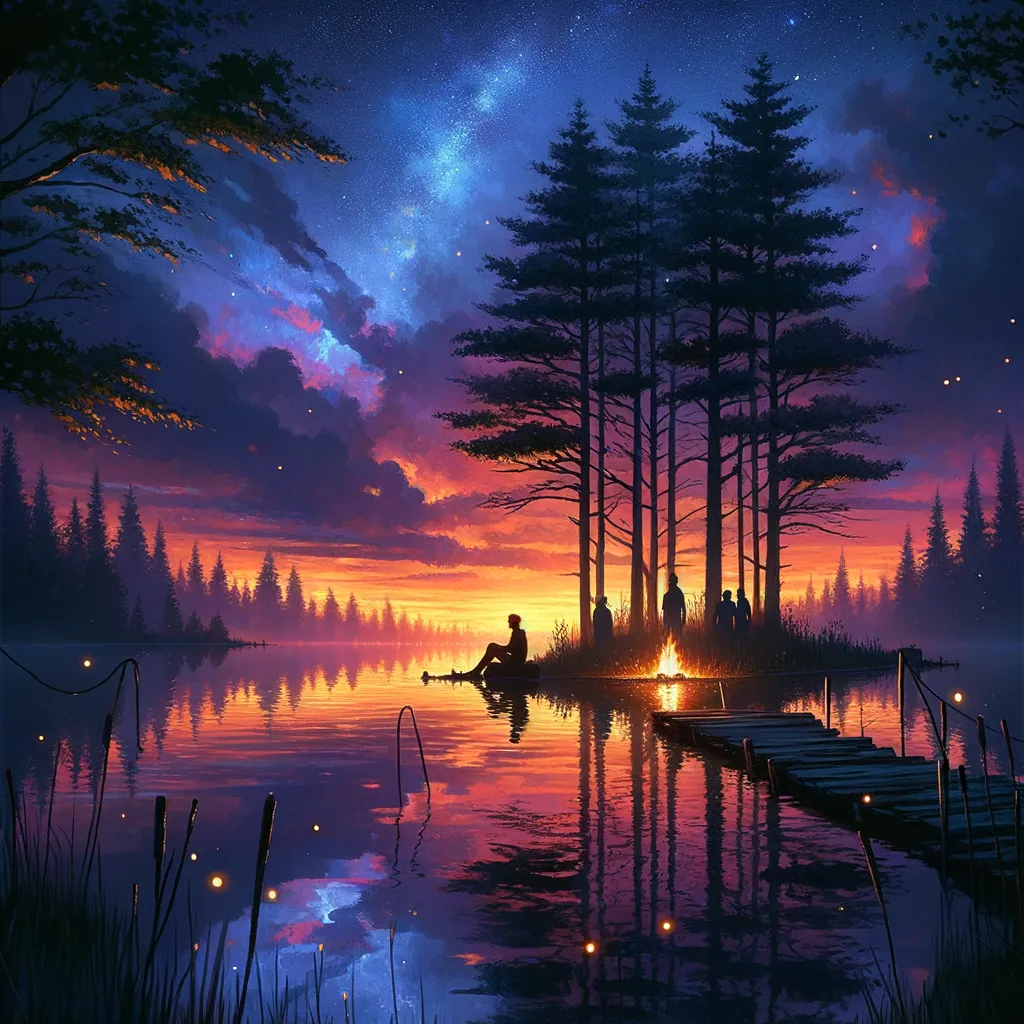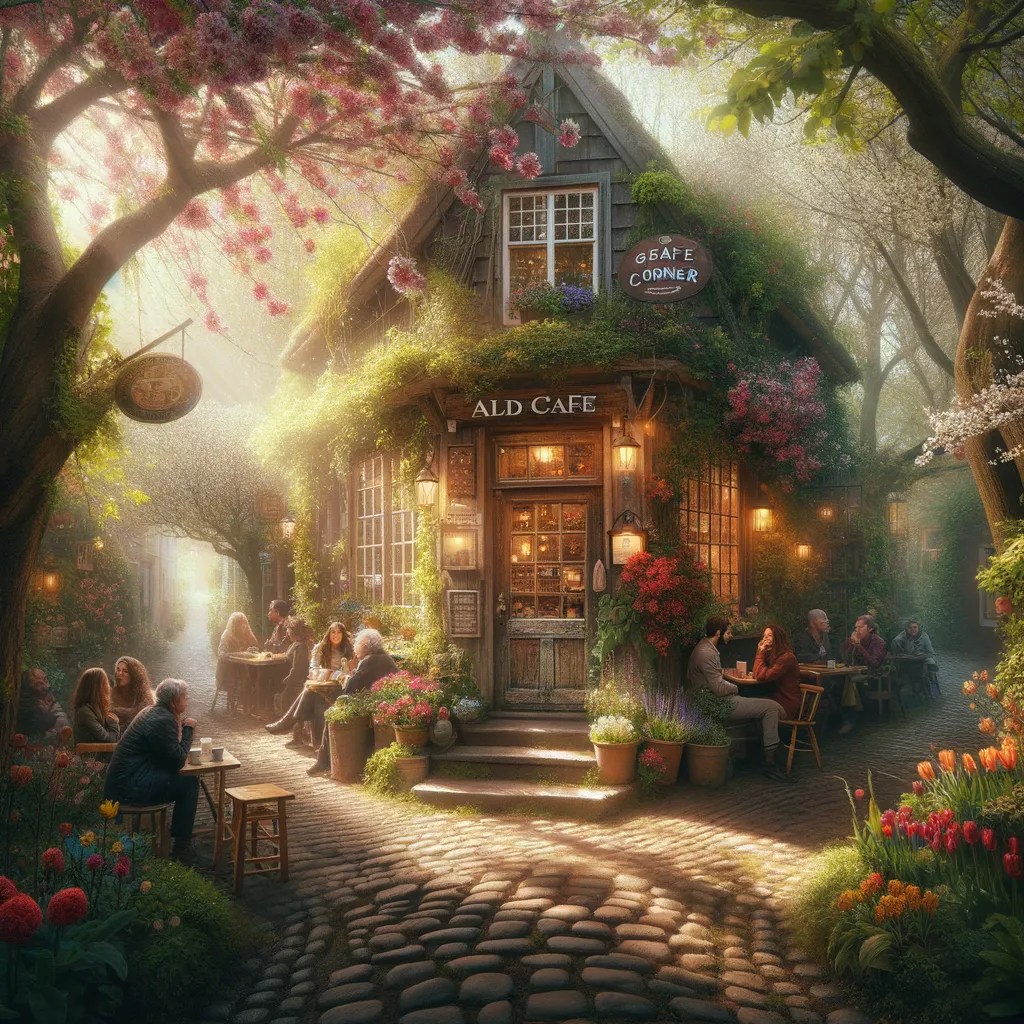Embers of Tradition: Unveiling Hidden Connections
In a sun-drenched plaza of a quaint Spanish village, the air buzzed with the vibrant energy of a local festival, where laughter mingled with the intoxicating scent of orange blossoms. As dusk fell, the townsfolk gathered for “La Noche de San Juan,” igniting bonfires that flickered like fireflies, symbolizing renewal and the joy of shared traditions. An outsider found themselves drawn into the warmth of the community, each leap over the flames resonating with a heartbeat of hope and connection, revealing the profound significance behind the ritual. In the glow of the firelight, reflections on personal life sparked the desire to create similar gatherings, where burdens could be shed like ashes, and dreams shared under the stars. As the embers faded, a realization emerged: the true essence of tradition lies not in replication but in the inspiration it ignites, urging the exploration of shared humanity and the stories that bind us all together.
In the memory of May 21, 2012, I found myself perched on the edge of a sunlit plaza in a small village in southern Spain, captivated by the vibrant tapestry of life unfolding around me. The air was thick with the scent of orange blossoms, and laughter danced like a shimmering breeze. This was the day of the local festival, a celebration that transcended mere merriment, weaving together threads of history, community, and ritual in a way that felt both foreign and profoundly familiar.
As the sun dipped lower, casting long shadows across cobblestones, I watched the townsfolk engage in a centuries-old tradition known as “La Noche de San Juan.” Each year, they gathered to honor the summer solstice, a night of fire and water, of cleansing and renewal. The ritual began with the lighting of bonfires, their flames flickering like fireflies caught in a joyous frenzy. People leapt over the flames, their laughter mingling with the crackle and pop of burning wood, a symbol of purging the past to welcome new beginnings.
While I was an outsider, every leap over the fire felt like a shared heartbeat. The warmth enveloped me, offering a tantalizing glimpse into the essence of community. This was not merely a festival; it was an embodiment of hope, a collective act of casting away doubts and fears. I yearned to understand the stories behind the faces illuminated by the firelight, the histories that had shaped them, the dreams that propelled them forward.
In that moment, I realized how much I admired the depth of their tradition. It was more than a celebration; it was a reminder of the importance of connection, of honoring one’s roots while reaching for the stars. I reflected on my own life, where routines often overshadowed rituals, and where the act of gathering had become a rare occurrence. How easy it was to forget the power of shared experiences when life became a blur of obligations and deadlines.
I imagined adapting this vibrant tradition into my own existence. What if I created my own version of a night of fire and water? Perhaps a gathering under the stars, where friends and family could share their burdens and dreams, a space to leap into the unknown together, releasing the weight of yesterday. I envisioned a bonfire, not just for warmth, but as a symbol of transformation, where we could throw in our worries, watching them turn to ash, while the flames danced and flickered in a celebration of resilience.
As the night deepened, I felt an unexpected kinship with the villagers, a connection that transcended language and culture. The celebration wasn’t merely about the act itself, but about the stories shared, the laughter that echoed long after the embers faded. Each person carried their own history, a unique narrative woven into the fabric of the night, reminding me that we are all part of a larger tapestry, each thread essential to the design.
The beauty of their tradition lay in its simplicity, yet it resonated with profound complexity. In a world often obsessed with the new and the novel, here was a rich heritage grounded in ancient practices that fostered community and connection. I felt an urge to incorporate these lessons into my own life, to create rituals that could anchor me amidst the chaos of modernity.
As the final embers of the bonfire dwindled, I was struck by the realization that traditions, no matter how distant, could be adapted to enrich our lives. They remind us of our shared humanity, urging us to find ways to connect with others, to celebrate the cycles of life, and to embrace the transformative power of community. I began to understand that it’s not about replicating the past but rather finding inspiration in it, allowing it to guide us toward a future filled with meaning.
In the quiet moments after the festival, as the villagers began to drift home, I pondered the essence of tradition. What makes a custom timeless and relevant? How can we honor the past while weaving our own narratives into the fabric of our lives? The question lingered in the air, a whisper of possibility, inviting me to explore the depths of my own story while considering the connections that bind us all together.
In the flickering glow of a shared bonfire, the threads of tradition weave a tapestry of connection, reminding all that the essence of community lies in the stories exchanged and the hopes ignited.



